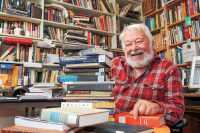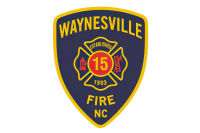Matheson wins election but says no to mayor’s job
 A meeting of the Sylva Town Board took an unexpected turn last week when mayor-elect Christina Matheson announced that she would not be able to accept the office. The board then appointed outgoing Mayor Maurice Moody to continue in office until the next municipal election.
A meeting of the Sylva Town Board took an unexpected turn last week when mayor-elect Christina Matheson announced that she would not be able to accept the office. The board then appointed outgoing Mayor Maurice Moody to continue in office until the next municipal election.
Dig Sylva, buy local
 By Jake Flannick • SMN Correspondent
By Jake Flannick • SMN Correspondent
A group of merchants in Sylva rallying their fellow shopkeepers and restaurateurs in the downtown area to jump on the buy local movement as a way to strengthen their own economy from the ground up.
Sylva getting pretty good at filling empty town board seats
The Sylva town board will appoint a new leader to an empty seat on the board in coming weeks — the fourth time the town board has gone through this in as many years.
Sylva town board welcomes new member, new mayor
The race for Sylva town board was won by only a hair on Election Day.
The results show Mary Kelley Gelbaugh edging Danny Allen off the town board by a mere four votes. Allen has been on the town board on and off through the years, with a total of 10 years in office if you add it all up.
Sylva leaders adopt streetscape plan for Main Street, N.C. 107
The Sylva town board has unanimously approved a streetscape plan for N.C. 107 from the Ingles grocery store to Dillsboro.
The plan indicates where sidewalks and landscape buffers must go, according to the town’s current zoning ordinance, but also shows places were future transit stops, crosswalks and bike paths could go.
Sylva candidates support helping downtown
The town of Sylva has struggled this year with balancing its budget and keeping businesses filling its downtown storefronts.
Going into next year, those same problems will likely continue to challenge town leaders, and whoever is elected as mayor and to the Sylva town board this November will have to grapple with how to overcome them next year.
Sylva’s beloved Lulu’s under new ownership
 The new owners of the iconic Lulu’s on Main restaurant in downtown Sylva are dedicated to keeping around the diner’s favorite menu items, but they’re also looking forward to adding some of their own.
The new owners of the iconic Lulu’s on Main restaurant in downtown Sylva are dedicated to keeping around the diner’s favorite menu items, but they’re also looking forward to adding some of their own.
New brewery to round out Jackson’s craft beer scene
 Nicole Dexter and Chip Owen might be the only brewmasters in Western North Carolina who left Asheville — the Mecca of microbreweries — in the rearview mirror when looking for a good spot to make craft beer. But the two young entrepreneurs have a good feeling about their new business venture in downtown Sylva.
Nicole Dexter and Chip Owen might be the only brewmasters in Western North Carolina who left Asheville — the Mecca of microbreweries — in the rearview mirror when looking for a good spot to make craft beer. But the two young entrepreneurs have a good feeling about their new business venture in downtown Sylva.
Sylva crowd marks King’s march, vows to continue fight
 In honor of the 50th anniversary of Martin Luther King Jr.’s march on Washington, D.C., political activists in Western North Carolina celebrated a dream of their own.
In honor of the 50th anniversary of Martin Luther King Jr.’s march on Washington, D.C., political activists in Western North Carolina celebrated a dream of their own.
Sylva leaders give green light to more, bigger, brighter signs
 It’s not quite little Las Vegas, yet, but new sign laws in Sylva are clearing the way for a brighter, blinkier town.
It’s not quite little Las Vegas, yet, but new sign laws in Sylva are clearing the way for a brighter, blinkier town.





